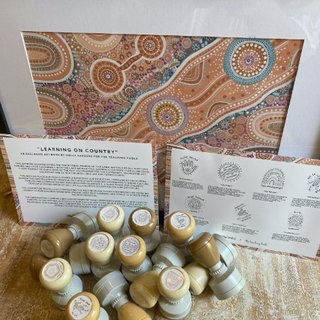Teachers as Allies
This year I chose not to engage in the Change the Date debate. It is too exhausting. I cannot face the racism that floods media and social media on this day. It is too ignorant and too frustrating, too much. How in this day and age are there so many people who cannot see that 26 January is not the date to celebrate and that it is time to move the celebration to another, more inclusive date?
Instead I am focusing on the increasing number of Australians who are working to support our First Nations communities – the allies who are taking the time and making the effort to get educated and support our communities by acknowledging our trauma, embracing truth about our history and fostering understanding by sharing this truth. Because this is how we move forward together.
Teachers, who are one of our greatest influencer groups and play a significant role in leading change, often ask me how they can support First Nations communities and be a strong ally for Aboriginal and Torres Strait Islander people. There are lots of things educators can do to support our communities and I love that so many are seeking advice on how they can provide support in a culturally appropriate way. Small things, like some of the ideas below, may make an Aboriginal child feel supported and start to open up or support a non-Aboriginal child to start on their own journey of being a strong ally.
I have talked before about ways to be a good ally and taking an anti-racism approach so I won’t go into those again – we all know how important standing up and speaking up is. Here are some other ways teachers can support Aboriginal and Torres Strait Islander communities.
The greatest thing a teacher can do is educate. Including Aboriginal and Torres Strait Islander perspectives throughout your program by looking at each unit you teach through a First Nations lens is a great way to increase the frequency of Aboriginal content in your classroom.
Including Aboriginal posters, books, art and displays around your classroom can support student's knowledge growth and appreciation for Aboriginal culture. Check out the teacher resource section of the Wingaru Kids platform for posters and classroom items that you can print and display. Most good book stores will have a range of books by Aboriginal authors or you could support an Aboriginal business and buy online from an Aboriginal owned enterprise. I often buy books from https://www.rileycallieresources.com.au/.
Include an acknowledgement of country in your classroom. You could include it as part of your morning greeting or display a written acknowledgement. Or why not do both? You will find our free acknowledgement poster https://wingaru.com.au/blog/warami-2021.
Keep an eye out for stickers, stationary and other items that can bring an Aboriginal presence to your classroom. There are some gorgeous teacher tools available, like the stamps from Holly Sanders x The Teaching Tools, that are a great inclusion for the classroom. I received a set of these last week and they are gorgeous! Holly created these designs for use by both Aboriginal and non-Aboriginal teachers:
Quality teaching tools for Aboriginal perspectives.
“This stamp collection is culturally appropriate for both Indigenous and non-Indigenous people to use. The contemporary artwork is my own and is designed with intent to spark important conversations, educate our future generations and facilitate inclusivity across classrooms and places of learning across Australia. It is important to note that First Nation’s people and cultures are diverse, with hundreds of nations and clans within those nations, each with their own unique traditions and beliefs, languages, knowledge systems, Lore and art. Whilst being culturally appropriate, the story telling and symbols used in this contemporary art stamp set does not represent all First Nation’s cultural groups or people and there may be different interpretations. If in doubt always check within your community”.
Celebrate Aboriginal people. There are so many great First Nations role models out there so introduce their stories to your students. This helps bring our culture to the mainstream and counter the negative narrative that students often hear in the media. Challenging this negative perception is so important in addressing discrimination.
Don’t be afraid to wear Aboriginal designed clothing. I often get asked if it is ok for non-Aboriginal people to wear Aboriginal print clothing or accessories and my answer is always yes. Most designers are very happy for non-Aboriginal people to wear their designs. The ones that should be left for mob are usually clearly marked and include easily seen information that a design is not ally-friendly and point you to their ally-friendly items. If you do wear blak designers take part in Wear it Blak Wednesday by using the following hashtags #wearitblakwednesday #onwednesdayswearblak. This helps spread the word about our deadly designers and supports economic development for our mob.
Buy Blak. Buying from Aboriginal business supports communities by contributing to Aboriginal economic developing. Aboriginal businesses are more likely to employ Aboriginal people so strong businesses contribute to lowering unemployment rates as well as supporting Aboriginal families to break cycles of poverty that are far too common in our communities. Buying from Aboriginal business is particularly important if you are buying Aboriginal items – whether it be clothes, art or education resources. Buying from a Blak business means you can be confident you are buying authentic and culturally safe items. Trading Blak shares some great info on buying blak and how it help First Nations communities so check them out on facebook https://www.facebook.com/TradingBlak
As always, pick actions that feel comfortable for you, don’t feel you have to do it all. Any support is appreciated! I woulod love to hear about the things you do to support our communities.


